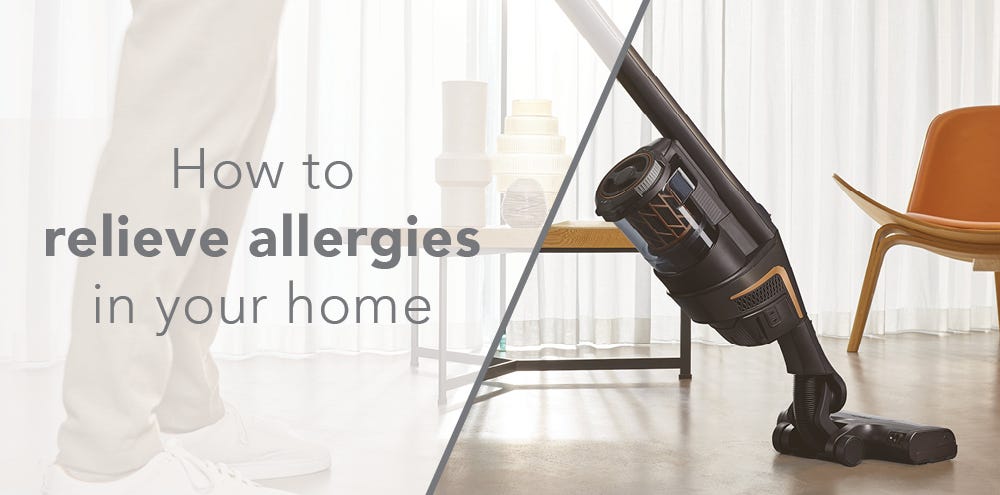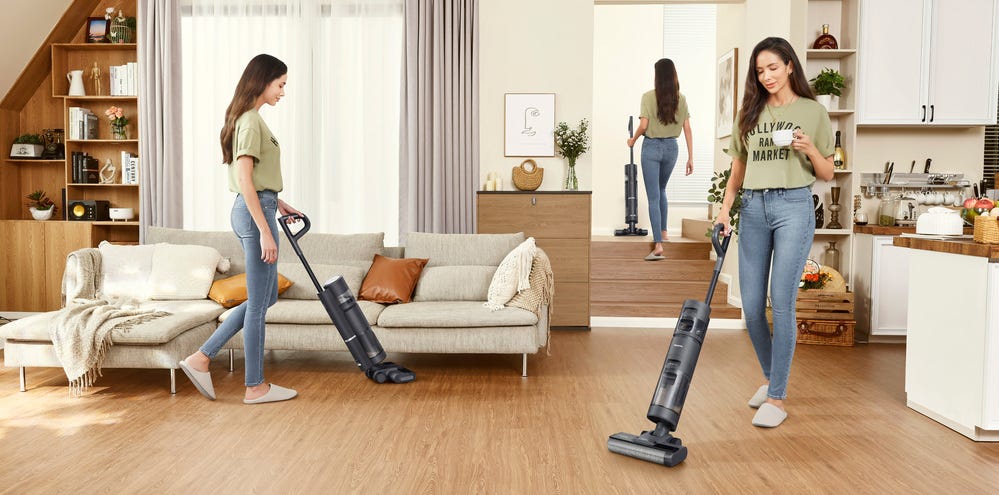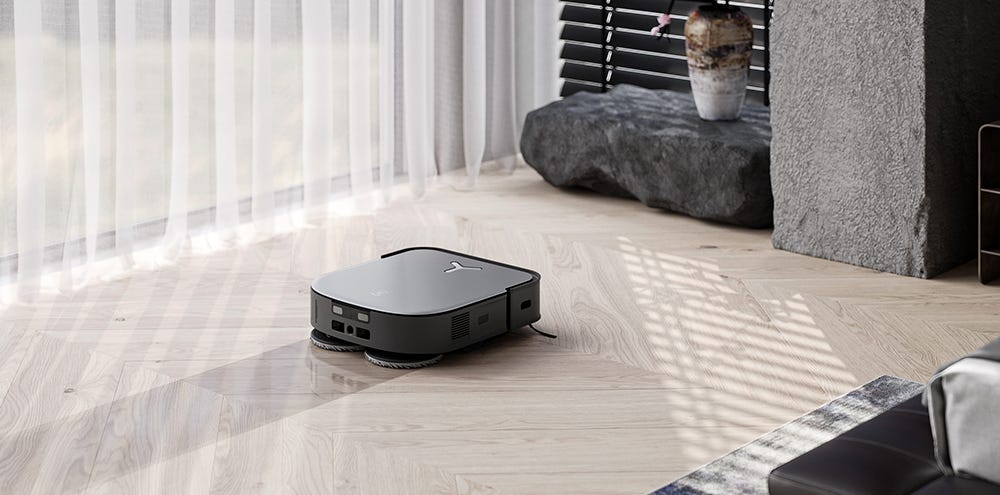Allergies can quickly put a stop to any relaxing you plan to do around the home. However, with the right tools and regular cleaning, you can help reduce dust, dander, and airborne allergens and, hopefully, offer yourself some relief.
HEPA filtration
If you’re in the market for allergy-relieving cleaning solutions, a good place to start is HEPA filtration.
What is a HEPA filter?
A HEPA (High-Efficiency Particulate Air) filter is a filter that consists of a network of interlaced fibres which trap particles. Theoretically, a HEPA filter removes at least 99% of dust, pollen, mould, bacteria, and any airborne particles with a size of 0.3 microns (µm).
So, using a vacuum cleaner with HEPA filtration should result in a more effective removal of these particles in your home and, potentially, a reduction in allergy symptoms associated with those particles.
Types of HEPA filtration
It’s worth noting that not all HEPA filtration is created equal. Some common labels you may see include:
- HEPA 10
- HEPA 12
- HEPA 13
- HEPA/Carbon
To put it simply, the higher the number the more particles the filter can capture. For example, medical environments may use products with HEPA 14 filters, which can capture 99.995% of all particles down to 0.3 microns!
Of course, the HEPA standard is already rigorous so while a higher rating is technically ‘better’ you may find that it is not necessary for your purpose. For example, few household vacuums will use a medical-grade HEPA filter.
For most, any HEPA-rated vacuum should be enough!
What are carbon filters?
Carbon filters are often found on air purifiers (and certain vacuum cleaners) and may be beneficial in combination with (not as a replacement for) HEPA filters. Unlike HEPA filters, carbon filters do not filter microparticles such as dust and dander. Rather, they absorb gasses and odours and can reduce the presence and harm of Volatile Organic Compounds (VOCs).
VOCs refer to gasses that are emitted from products in our daily lives (from paints, solvents, cooking, fuels, cosmetics etc.). Long-term exposure to VOCs in our homes may negatively impact our health, so using carbon filters to help remove these could be beneficial.
What products feature HEPA filtration?
Many of our powerful bagged and bagless vacuums feature HEPA filtration. A few recommendations include:
- Wertheim 7 Series Bagged Vacuum Cleaner
- Miele Complete C3 Family Bagged Vacuum Cleaner
- Hoover Regal Bagged Vacuum Cleaner (bagless available)
Pet Hair and Dander
Our beloved pets can bring a lot more than just cuddles and affection (or apathy if they’re a cat), they can also fill our homes with pet hair and dander. Not just a visual nuisance on your favourite sofa, pet hair and dander can be an allergy-inducing problem.
Fortunately, many of our vacuum cleaners are designed with pets in mind!
What is the difference between pet and non-pet vacuum cleaners?
Usually, the difference lies in the attachments provided. Most pet vacuums will include a specialist brush head that is purposefully designed to pick up pet hair. That offers a better result than what you get from a generalised vacuum head.
Other features may include anti-tangle technology that reduces pet hair getting caught around brush heads or in filters.
Recommended pet products:
- i-Vac Ultra Pets Plus S30 Stick Vacuum
- Sauber Pro Pets Bagged Vacuum Cleaner (bagless available)
- Miele Triflex HX2 Cat & Dog Stick Vacuum
Fine dust and debris
It’s no secret that dust is a leading cause of allergies in the home, but what solution you opt for will depend on your needs and your home environment.
For example, stick vacuums are incredibly versatile and can be used to vacuum carpets and hard floors as well as couches and curtains, in hard-to-reach spots under furniture and even up on ceilings! That’s great for ridding the home of dust in every nook and cranny.
On the other hand, robot vacuums are a great choice for those that don’t have the time for regular vacuuming. These robots get your daily clean done for you, whether you’re home or not!
Even better, our entire range of robot cleaners are 2-in-1 vacuums and mops!
For those that have a lot of carpet and/or are particularly sensitive to dust (or other allergens), a more powerful vacuum, or vacuum head, may be needed.
Different vacuum heads compared: standard vs turbo vs power
When it comes to finding a powerful, deep-cleaning vacuum it’s easy to simply look at wattage and suction power. But the vacuum head used can be just as (if not more) important.
Vacuum heads will typically fall into one of three camps:
- Standard
- Turbo
- Power
While a standard vacuum head glides over floors, turbo and power heads contain a small rotating brush that scrubs the surface to loosen and lift dust, debris, pet hair and dander.
If you are looking for a deep-cleaning vacuum, whether to pick up pet hair or dust, then a turbo or power head is undoubtedly the way to go.
It is worth noting, however, that because these heads scrub as they clean, they can be more abrasive on carpet fibres and fabrics, so you may want to use a standard head for your everyday vacuum and leave the turbo or power head for deeper cleaning.
Recommended deep-cleaning products:
- Hoover Allergy Bagged Vacuum Cleaner (bagless available)
- Sauber Pro Pets Bagged Vacuum Cleaner (bagless available)
- Wertheim Series 7 Bagged Vacuum Cleaner
Mould and Mildew
With the potential to lead to health issues, mould and mildew can be a real problem in the home. Fortunately, there are some solutions.
Steam cleaners can be an excellent, natural way to deal with mould and mildew using nothing but the power of steam. Steam mops and cleaners can effectively sanitise and kill bacteria such as mould and mildew, so you can breathe easy.
A nice potential bonus is if you select a multipurpose cleaner, such as the Wertheim Pro Multi Steamer, you can use it on upholstery and furniture too. This may assist in killing dust mites on these surfaces, offering the potential for further allergy relief.
Recommended steam products:
Shop the Godfreys Allergy Sale today!





